Birds are one of the most fascinating creatures in nature. The province of Limpopo in South Africa is home to a vast array of bird species, from the majestic African Fish Eagle to the diminutive Cape White-eye.
With its diverse habitats, ranging from the lush bushveld to the dry Kalahari savanna, Limpopo is an ideal destination for birders of all levels.
In this article, we’ll take a look at some of the most interesting bird species found in Limpopo, as well as the best locations for birdwatching in the province. So, come along and discover the amazing birdlife of Limpopo.
1. Woodland Kingfisher
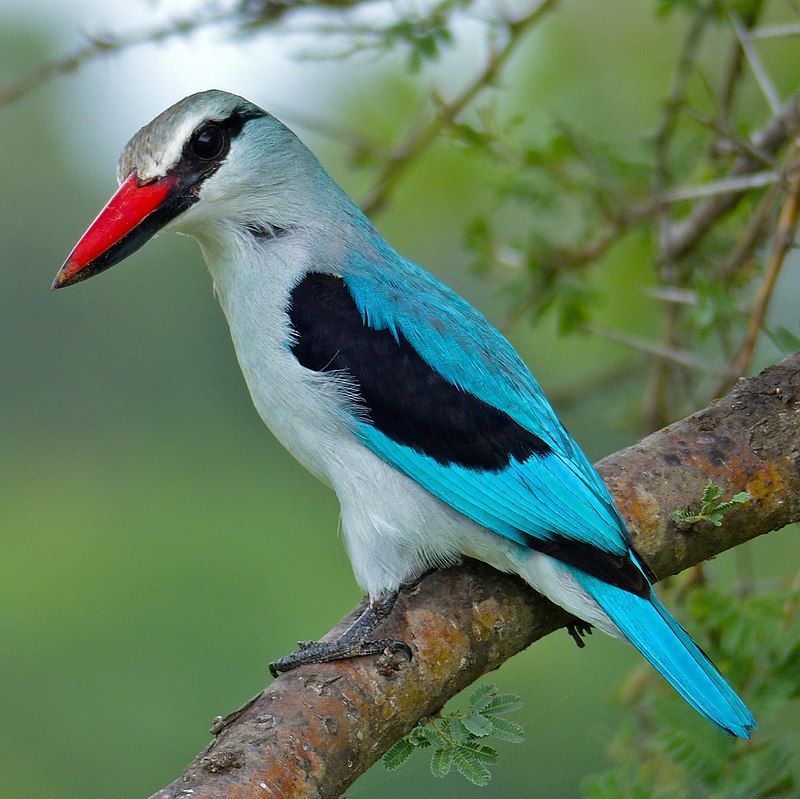
The woodland kingfisher is a type of kingfisher found in Africa, specifically south of the Sahara Desert. It is a medium-sized bird, typically measuring between 15 and 16 cm in length, and has a bright turquoise head and wings with a white chest and belly.
Its long, straight bill is black, and it has a distinctive white eye stripe. Its legs and feet are also black. The woodland kingfisher is a tree-dwelling species, primarily inhabiting wooded areas, but can also be found in savannahs and riverine forests.
It feeds mainly on insects, but also eats small fish, amphibians, and reptiles. The species is diurnal and can be seen perched on branches or wires, searching for prey.
It is a solitary bird and often pairs off with a mate during the breeding season. The woodland kingfisher is widely distributed throughout much of Africa south of the Sahara Desert, from Senegal and Gambia in the west to Somalia in the east.
The species is considered to be of least concern by the IUCN, as its population is currently stable.
| Kingdom | Animalia |
| Phylum | Chordata |
| Class | Aves |
| Order | Coraciiformes |
| Family | Alcedinidae |
| Genus | Halcyon |
| Species | H. senegalensis |
2. Natal Spurfowl
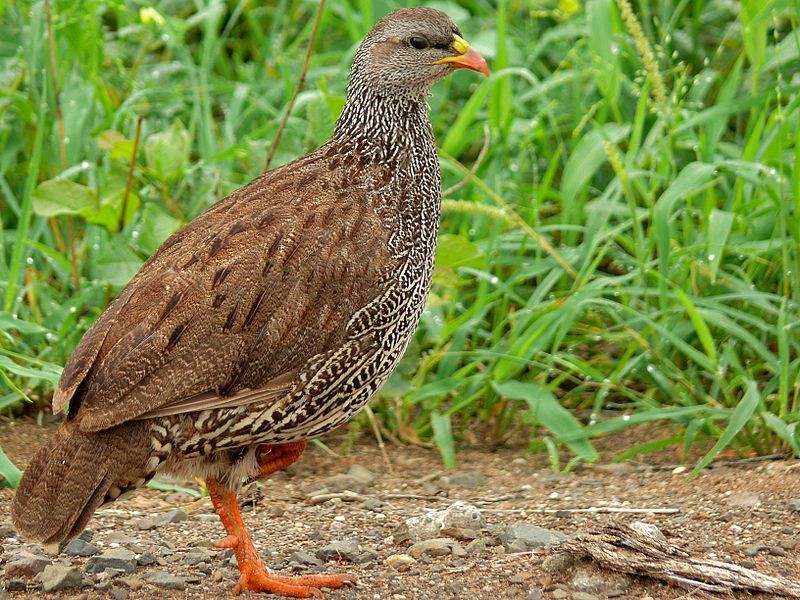
The Natal spurfowl, also known as the Natal francolin, is a type of bird belonging to the Phasianidae family. It is native to a number of African countries, including Botswana, Eswatini, Mozambique, South Africa, Zambia, and Zimbabwe.
This bird species is well adapted to a variety of habitats, from grassland to open savanna. It is usually seen in small groups, although larger flocks of up to 30 individuals have been recorded. The Natal spurfowl is mainly terrestrial, but it will also roost in trees.
It has a distinctive call that has been likened to a loud, raucous ‘tok, tok, tok’. The Natal spurfowl feeds mainly on grass, seeds, and insects, and will also take small reptiles, and even eggs from other birds.
It has a predilection for cultivated crops, which can lead to conflicts with farmers. However, its overall population is considered to be stable, and it is not currently considered to be vulnerable or endangered.
| Kingdom | Animalia |
| Phylum | Chordata |
| Class | Aves |
| Order | Galliformes |
| Family | Phasianidae |
| Genus | Pternistis |
| Species | P. natalensis |
3. Diederik Cuckoo
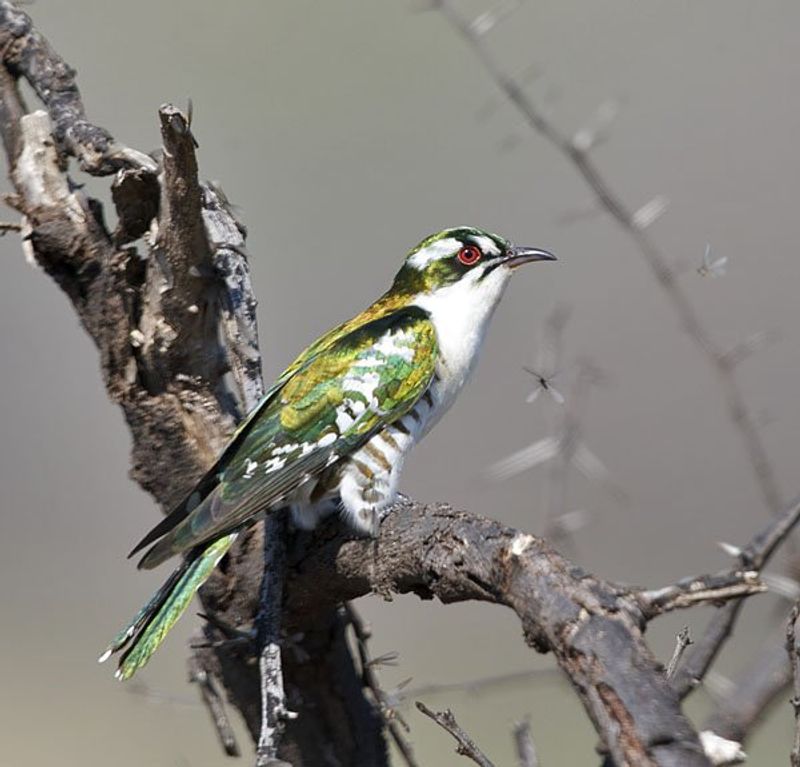
The Diederik Cuckoo is a member of the Cuculiformes order, which is a group of birds that contains a variety of species. This order includes the Roadrunners, Anis, and the Diederik Cuckoo, which is also referred to as the Didric Cuckoo or Dideric Cuckoo.
The Diederik Cuckoo is a type of avian that has adapted to many environments and can be found on multiple continents. They have a varied diet, which typically includes insects, small animals, and even some fruit and berries.
They are known for their loud and distinctive call, as they are generally quite vocal during the day. They have a wide variety of colors and patterns, ranging from shades of red, brown, black, and grey.
Their wingspan can range from eight to twelve inches, and they typically weigh between three and four ounces. In addition to their loud call, they are recognized for their unique mating rituals, which involve the male courting the female by performing a courtship dance.
The Diederik Cuckoo is an interesting and important part of the Cuculiformes order, as they add diversity and life to the environment.
| Kingdom | Animalia |
| Phylum | Chordata |
| Class | Aves |
| Order | Cuculiformes |
| Family | Cuculidae |
| Genus | Chrysococcyx |
| Species | C. caprius |
4. Marico Sunbird
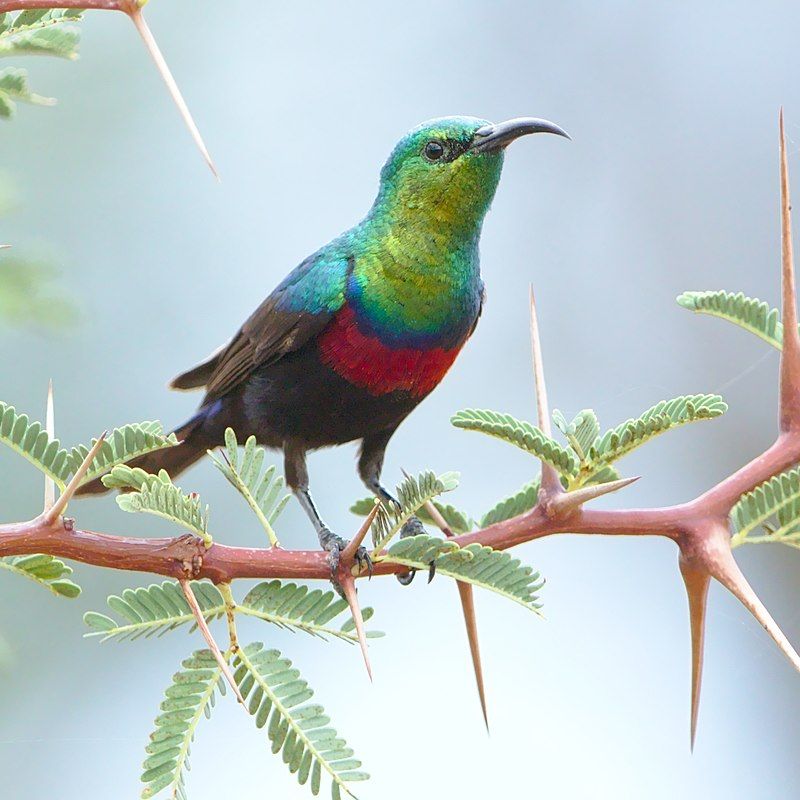
The Marico sunbird is a species of bird that belongs to the family Nectariniidae. It is native to the woodlands of the eastern and southern parts of the Afrotropic region. This type of bird is mostly located in the southeastern region of Africa.
It is a marvel to behold, with its colorful and vibrant plumage that is a mix of yellow, metallic green, and black. Its long, curved beak allows it to feed on nectar from flowers, as well as small insects.
The Marico sunbird is an important part of the African ecology, as it helps to pollinate flowers and feed on small insects which can be damaging to crops. This species of bird has adapted well to its environment, and its presence is an important part of the African landscape.
| Kingdom | Animalia |
| Phylum | Chordata |
| Class | Aves |
| Order | Passeriformes |
| Family | Nectariniidae |
| Genus | Cinnyris |
| Species | C. mariquensis |
5. Cape Vulture
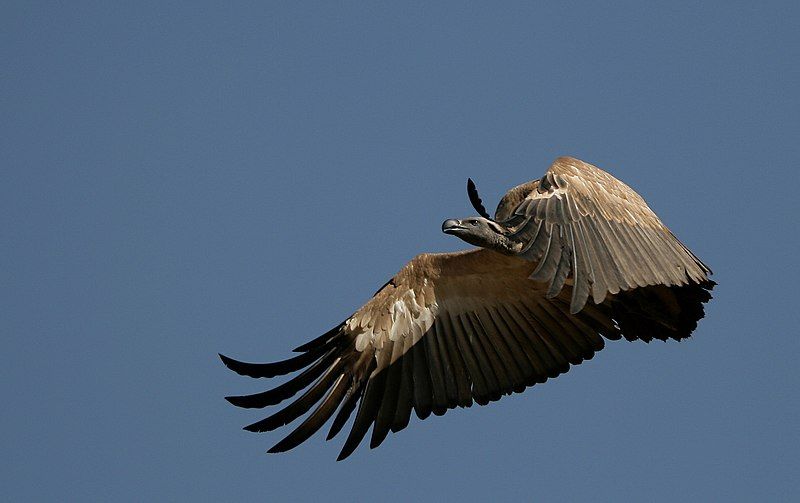
The Cape vulture, also known as the Cape griffon and Kolbe’s vulture, is a species of Old World vulture belonging to the family Accipitridae.
This species is found exclusively in southern Africa, with its range mainly covering South Africa, Lesotho, Botswana, and some parts of northern Namibia.
It is most commonly seen inhabiting cliffs, though it can also be seen in other areas of suitable habitat. The Cape vulture is a relatively large bird, with a wingspan that can reach up to 2.8 meters.
It has a rather distinctive appearance, with a blackish-brown plumage and a white ruff around its neck.
The Cape vulture is also known for its bald head, which helps to facilitate its ability to scavenge for food in hot climates. The Cape vulture is a monogamous species, meaning that it will usually mate with the same partner for life.
It will typically lay one egg per year, and its nesting sites are usually found on cliffs, where it has access to an abundant food supply.
The egg is usually incubated by both parents, and the young vulture will fledge after about two months. The Cape vulture is an important species of bird in southern Africa, as it helps to keep the environment clean by scavenging for carrion.
Its population is currently stable, though it is threatened by human activities such as habitat destruction and poisoning. In order to protect this species, conservation efforts have been put in place in many parts of its range.
| Kingdom | Animalia |
| Phylum | Chordata |
| Class | Aves |
| Order | Accipitriformes |
| Family | Accipitridae |
| Genus | Gyps |
| Species | G. coprotheres |
6. Black-collared Barbet
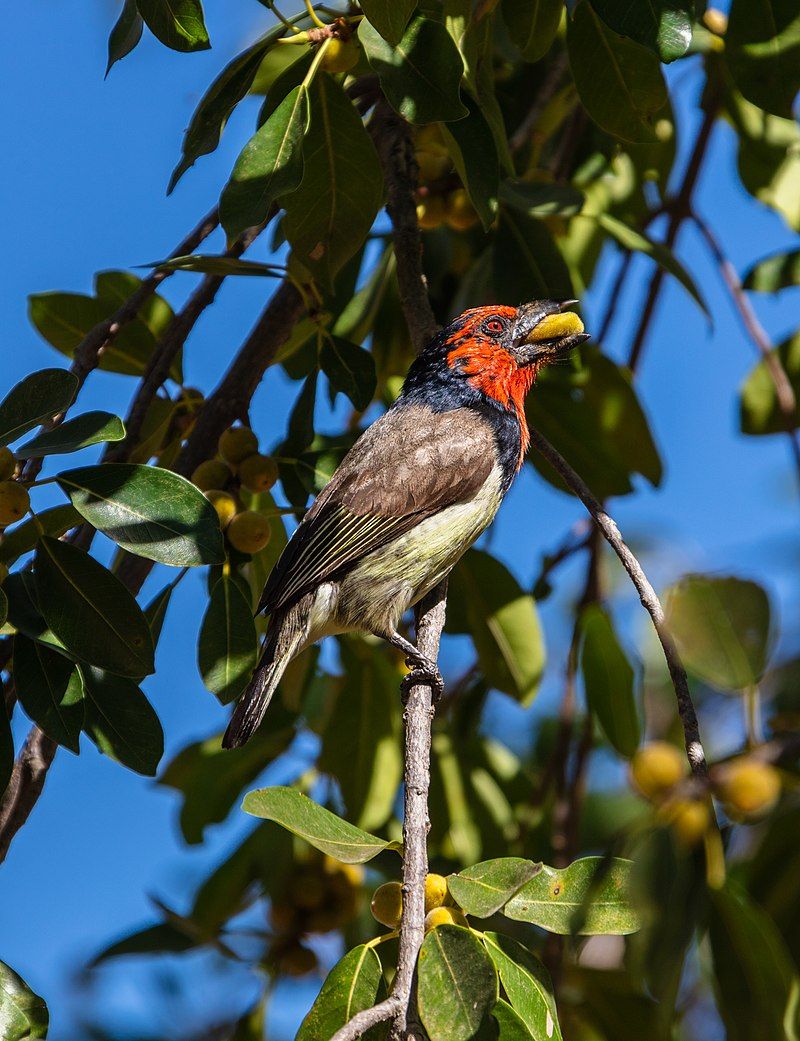
The black-collared barbet is a species of bird belonging to the family Lybiidae. It is native to sub-Saharan Africa, an area that includes many countries such as Ethiopia, Sudan, and Somalia.
This species of bird has several different names, depending on the region it is found in. In Afrikaans, it is referred to as Rooikophoutkapper, in Zulu, it is known as isiKhulukhulu and isiQonQotho, and in Xhosa it is known as Isinagogo.
The black-collared barbet is a medium-sized bird with a black collar around its neck, hence its name. It has a stout body and a long tail. Its feathers are mainly grey in color, with a pale yellow belly and a black cap.
Its diet consists mainly of fruits, flowers, seeds, insects, and sometimes small frogs. The black-collared barbet is a monogamous species, meaning that it typically mates for life. It typically builds its nest in a tree, using sticks and mud to build a dome-shaped structure.
The female typically lays two to four eggs and both parents care for their chicks until they fledge. The black-collared barbet is an important species to its environment.
It helps to spread the seeds of the plants it eats, which promotes healthy growth and regeneration of the area’s vegetation. It is also an important food source for many predators, such as birds of prey.
Unfortunately, this species is threatened by habitat loss due to human development. Conservation efforts are needed to protect the black-collared barbet and its habitat.
| Kingdom | Animalia |
| Phylum | Chordata |
| Class | Aves |
| Order | Piciformes |
| Family | Lybiidae |
| Genus | Lybius |
| Species | L. torquatus |
7. Bennett’s Woodpecker
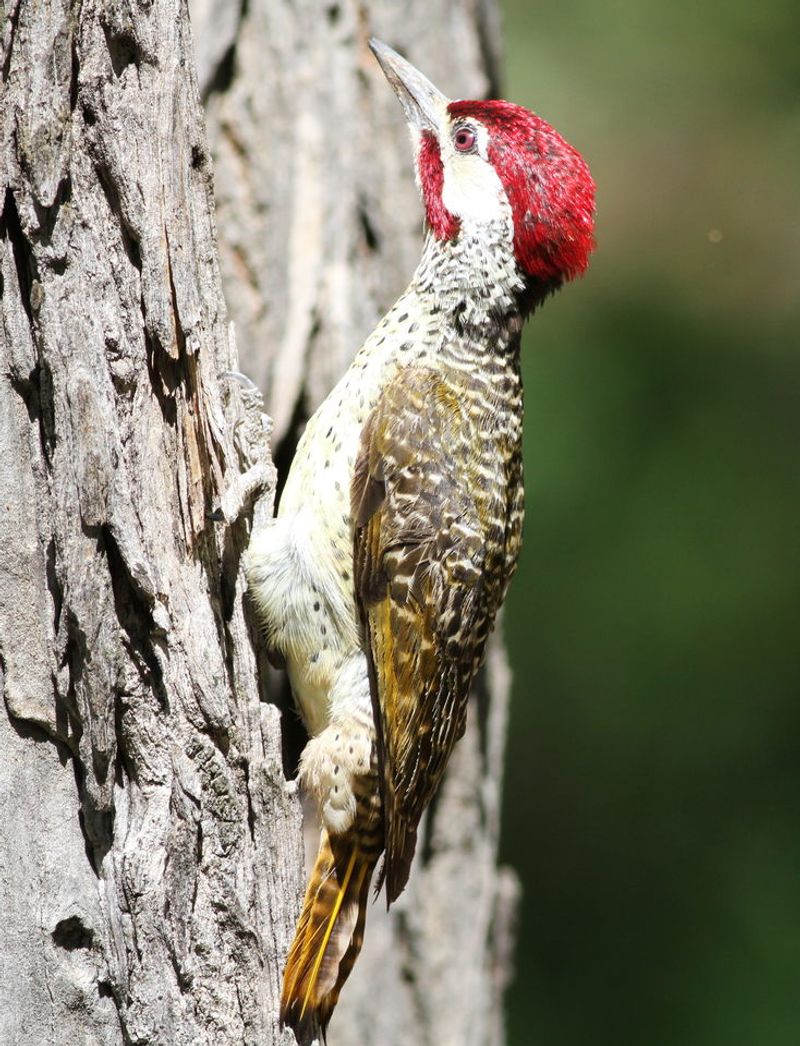
Bennett’s woodpecker is a species of bird that belongs to the Picidae family. It is native to Africa and can be found in woodlands and bushes across the continent.
The International Union for Conservation of Nature has evaluated the species and determined that it is a least-concern species.
This means that it is not in immediate danger of becoming extinct and its population is stable. Bennett’s woodpecker has a black head and neck, white cheeks and throat, and a white-tipped tail. Its body is dark gray and its wings are brownish-gray.
It is a small bird, measuring around 17 cm in length. Its diet consists mainly of insects, although it will also eat fruits and other plant matter. The bird is a social species and is commonly found in small groups.
It is an active bird that is often observed foraging in trees or on the ground. It is also known to make a loud, sharp call that can be heard from a distance. Bennett’s woodpecker is an important species in its African habitat.
It helps to control insect populations, particularly through its foraging activities. It is also a common species that is often seen by birdwatchers in many parts of Africa.
Its conservation status is listed as the least concern is encouraging, as it indicates that the species is not in immediate danger of extinction.
| Kingdom | Animalia |
| Phylum | Chordata |
| Class | Aves |
| Order | Piciformes |
| Family | Picidae |
| Genus | Campethera |
| Species | C. bennettii |
Conclusion
Birds in Limpopo are an important part of the local ecology and economy. They provide food for people and animals, pollinate plants, maintain biodiversity, and help control pests.
Their presence in the region is an indication of healthy, balanced ecosystems and a healthy environment.
As such, protecting and preserving birds in Limpopo is essential for maintaining the health and balance of the region and its people.